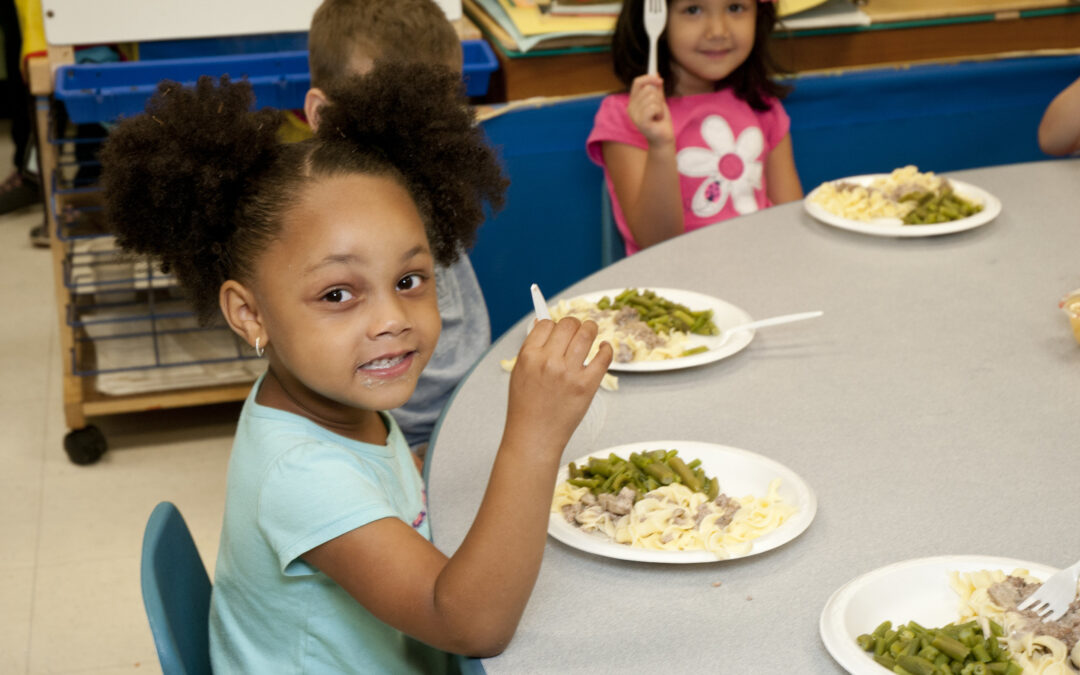Trying out solid foods is an exciting time for infants and their caretakers. Little ones gum on new textures and new flavors, and the process can be anything but tidy. Similarly, when toddlers try new foods, they may feel anything from caution to excitement. Some foods are a hit, and others are relegated to the “try it later” category. When introducing new foods to your infant or toddler, follow these guidelines for a successful introduction.
1. Start small.
When introducing a new food to your child, give them just a little taste the first time. Studies have shown that offering even a tiny portion is an effective first step in – over time – getting kids to eat new foods.
2. Try, try again.
You may need to serve a new food – like peas or broccoli – many, many times before your toddler will eat it. It can take as many as 15 exposures for a child to get fully comfortable with a new food. Sometimes even more. Knowing that can help you be more realistic with your expectations.
3. Be creative.
To keep your child willing to try those peas or broccoli the first 14 times, you’ll need to bring some fun to the table. Some ideas for presenting the same food in different ways: cut or arrange the food in different shapes; change up the plates, bowls and utensils you serve them with; or serve it in a different location, like a living room picnic. Try to keep the experience new and fun for your child.
4. Let them explore.
You’ll have more success introducing a new food if you let your child explore it with all of their senses. Encourage them to smell it and touch it. You might even need to roll it in their fingers. That may sound crazy, but kids learn through experience and discovery. They’ll be more comfortable trying new things to eat if they can fully examine them first.
5. Get them involved.
One way to motivate your little one to try something new is to bring them to the grocery store with you and have them pick out a new fruit or vegetable to try. And they’ll be even more excited to try their choice if you let them help you prepare it before mealtime.
6. Don’t force it.
Studies show that kids react negatively when pressured to eat foods. And in the long run, it doesn’t help them like new foods. Neither does negotiating or offering rewards. Be patient, stay positive, and think long term.
7. Let Your Child Menu Plan.
Kids are much more likely to eat unusual foods when they are part of the growing, selecting, or food preparation process. This can be especially effective if it’s presented as a special treat or privilege. At the farmer’s market or grocery store, let your child play Iron Chef by choosing one to three unusual ingredients in the produce aisles to use during the week. Or, share one of your favorite recipe books with your little one and let them choose main dishes based on the photographs. (You might mark off four to five dishes you’d like to make and let them choose from those options.) In the spring or summer, consider helping them grow veggies or herbs. You’ll be surprised how much they want to taste food made with ingredients they’ve spent time cultivating.
An Early Start for Healthy Habits
Rising Stride uses a variety of learning tools to help children understand the importance of healthy eating during the school day. We now offer “All Meals Included” in our Centers and help our students learn about health and nutrition.
With a healthy mix of structured enrichment and free play, we give children the guidance they need to start learning as soon as they’re ready. Contact us today to learn more, or check out our virtual tours on our website for Rising Stride Child Care Centers. You’ll quickly see why parents choose our child care centers to help build resilient, compassionate, and engaged young learners.

